
Russet Article Pictures
This is the link for the color picture for the Russet article published in North/South Trader
This was in the July/August 2007 Issue of the North/South Trader. Please contact them at http://www.nstcivilwar.com/ or 540-672-4845 for a the back issue. The issue number
Diagram:

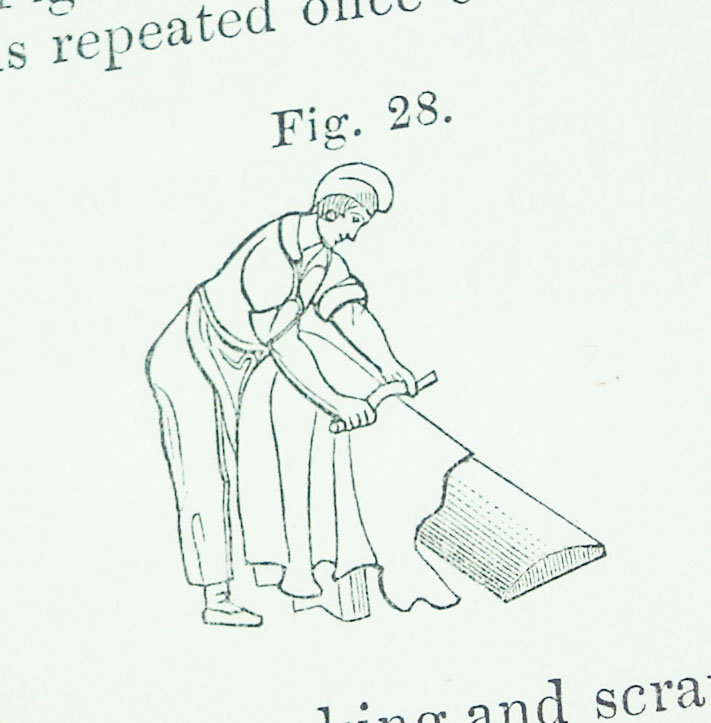
Drawing #1: Beam scrapping residue from hide
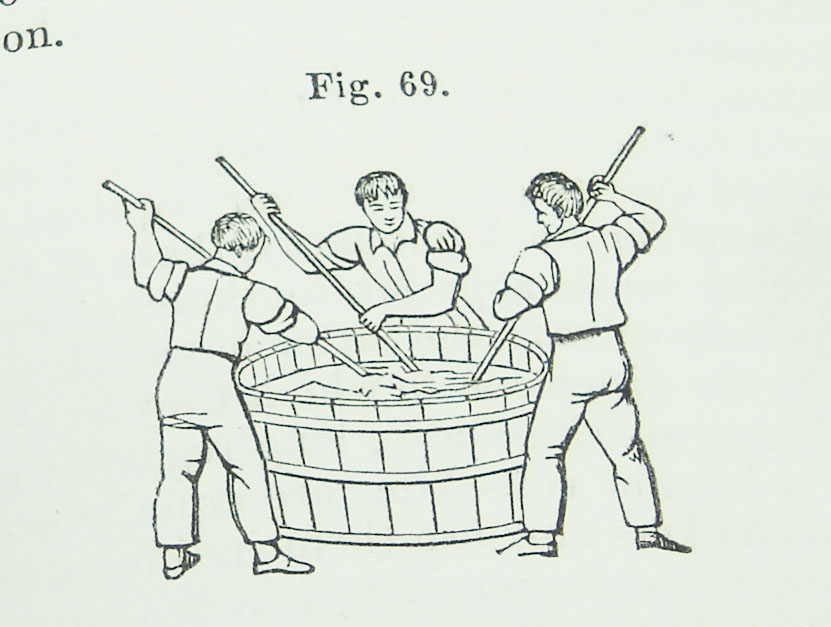
Drawing #2: Tanning the hides in "ooze" solution of bark and water.
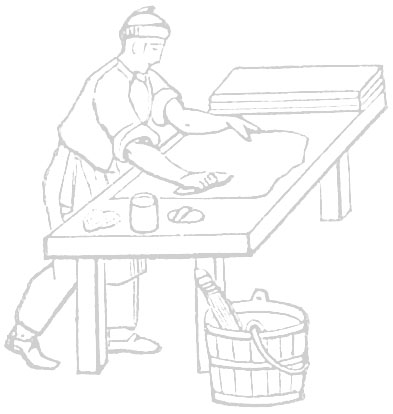
Drawing #3: currier "fat liquoring" and finishing the leather.
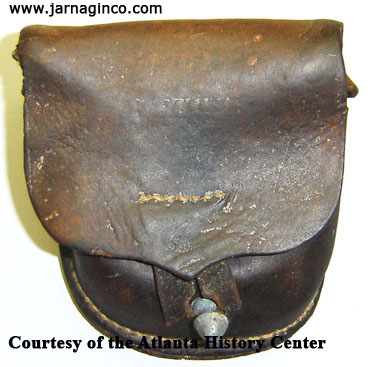
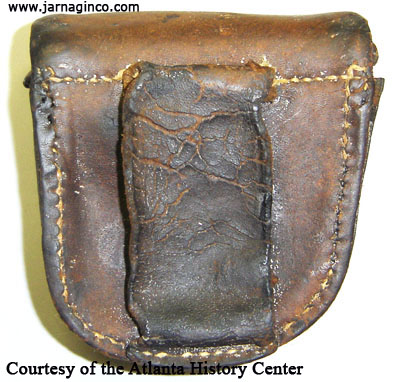
Photo #1:
Oak tanned "fair" leather cap pouch made by G. H. Wyman of Augusta Ga. Note the yellow tinge to its color. During the war both sides often left high quality leather as "fair"-free from both stains and blemishes.
Courtesy of Atlanta History Center
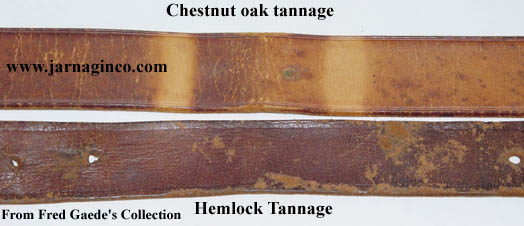
Photo #
The picture of the top musket sling is a "fair" leather sling that is chestnut oak tanned, but the bottom is a stained hemlock sling. The best place to see the original "fair" color of the top sling is where the loops covered the surface of the sling and protected the surface from both light and dirt. The darker areas is what happens over time when the leather is exposed to light and this slowly darkens the leather and it begins to look like the "English Color". Note the bright yellow color of the "fair" leather vs. the reddish brown of the stained hemlock sling.
Courtesy of Fred Gaede
Photo #2:
Both of these Federal cartridge boxes were made at Watertown Arsenal. The box at the left was oak tanned, dyed black. It retained its black color. The one on the right was hemlock tanned and also dyed black but faded to a chocolate brown a very common occurrence among Federal equipments during the war and one often seen today among surviving artifacts.
Authors collection
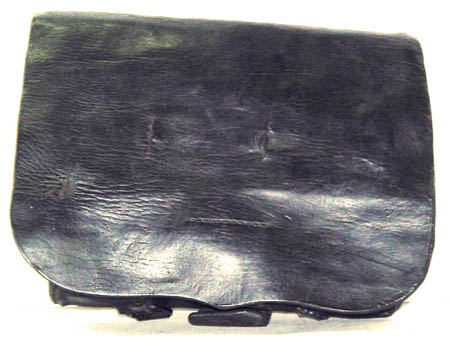
Photo #3:
This common pattern (.58 cal.) Confederate made cartridge box was oak tanned then dyed black. It still retains its black color. In general, Confederate accoutrements would have been invariably stained, dyed black or left "fair" as time and cost would permit.
Authors collection
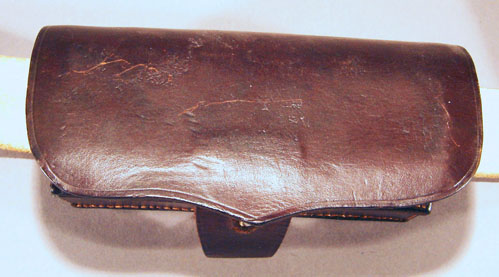
Photo #4:
Specification for some British equipment called for the leather to be in the "English hides" color. The rich "London" color can best be seen in this British navy Pistol Box. Confederate imported English leather was likely left russet but some may have dyed black.
Courtesy of Walter Anderson
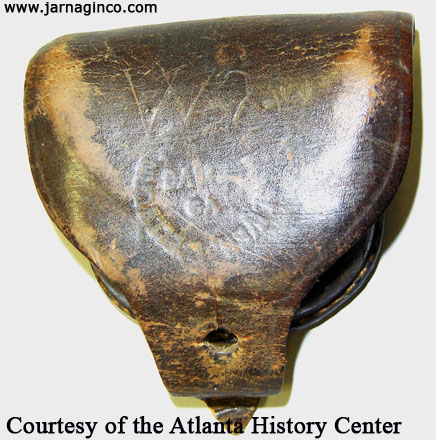
Photo #5:
Cap pouch made by Confederate contractor Wellborn, Nichols & Oliver of Dalton Ga. form imported "London" leather. Compare the texture and color of the leather to the domestic made leather cap pouch box in photos #1 and #8.
Courtesy of the Atlanta History Center
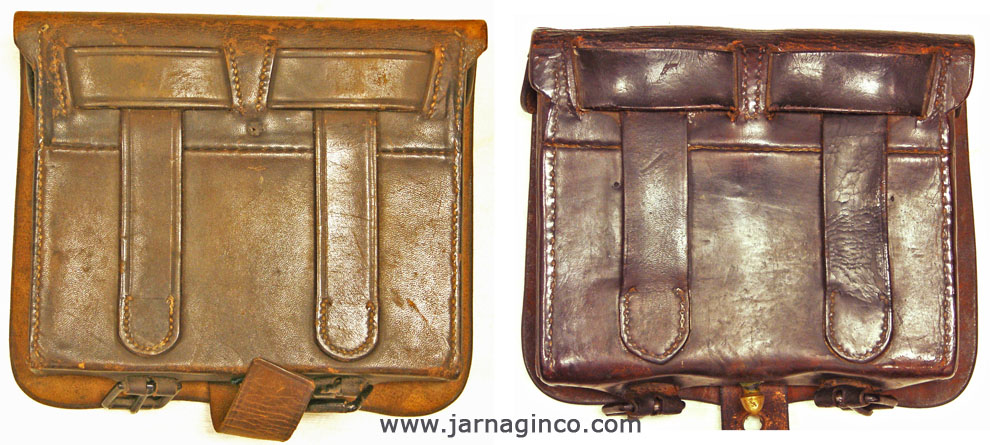
Photo #6:
Note the difference in color. on the left is a rare (possibly a prototype) Allegheny Arsenal Pattern of 1857 cartridge box made of (English Color) leather. On the right is a Confederate copy of the Pattern of 1857 cartridge box, but it was made from hemlock leather that has faded to chocolate brown.
Courtesy of Paul Johnson
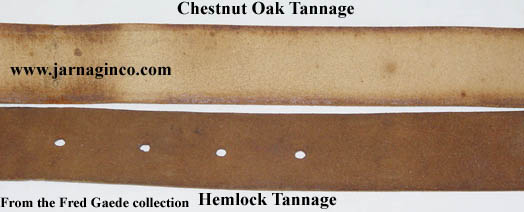
Photo #7:
The reverse of two musket slings illustrates the way to identify the difference between which bark was used during the tanning process, this can be seen even if the leather has been dyed or stained. On the top musket sling is an chestnut oak bark tanned musket sling and on the bottom is one tanned using hemlock bark. Notice the "yellow" color of the oak vs. the reddish color that the hemlock bark leaves to the leather.
Courtesy of Fred Gaede

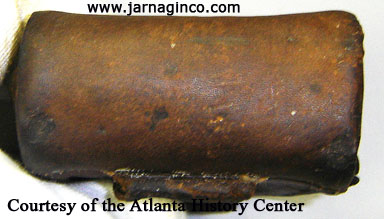
Photo #8 and 8A: Photo on left is the rear view of photo #1 and the right view is the top view of the same cap pouch.
This fair leather Confederate cap pouch made by G. H. Wymans of Augusta Georgia, is notable for the crudeness of its leather . A sign it was probably made using domestic tanned leather rather than imported. This leather was fat liquored by the currier and then it was shipped to Wymans. There has been no attempt by the currier to slick down the grain surface of the leather and this would be a sign of the desperate need for leather to equip the troops in the field.
Courtesy of Atlanta History Center
Drop us a note and tell us what you think
Company of Military Historians
For More information on 19th century leather please follow this link.
For a list of other article on leather and equipment please follow this link